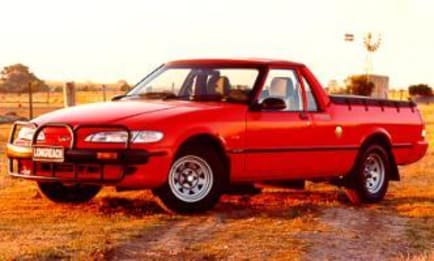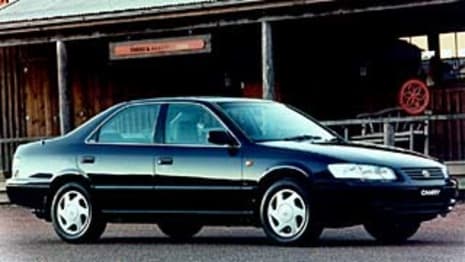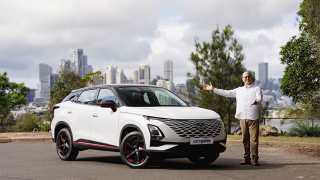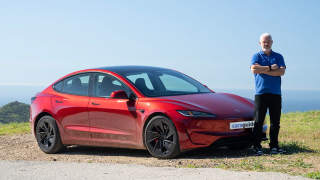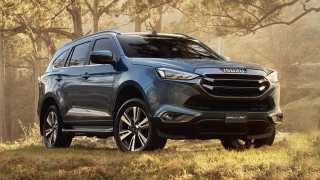
Used Ford Falcon review: 1996-1998
- Ford Falcon
- Ford Falcon 1996
- Ford Falcon 1997
- Ford Falcon 1998
- Ford Falcon Reviews
- Ford Reviews
- Ford Sedan Range
- Ford Commercial Range
- Sedan
- Commercial
- Ford
- Used Car Reviews
- Buying tips
Ford ruled the road when the EL Falcon was launched in 1996. The company had assumed the top sales spot in the early 1980s and cruised into the 1990s still comfortably ahead of archrival Holden, which was recovering from its financial meltdown in the mid-1980s.
The EL was the last in the line of aerodynamic Falcons that began with the EA in 1988, and arguably the best. It was also the last model before the ill-fated AU, which sent Ford into a financial tailspin that rivalled Holden’s of a decade earlier.
MODEL WATCH
Ford spent $40 million on what was a comprehensive facelift designed to fix the problems that had plagued the all models of the Falcon since the EA, including the EF that immediately preceded the EL.
Compared to the EF there was a number of relatively minor cosmetic changes, including new grilles, headlamps, bumpers, tail lights and wheel trims.
Thicker, tinted glass and added dash insulation reduced noise inside the Falcon, while new seats increased headroom, which made it more comfortable for taller drivers.
While the external changes were welcome the big improvements on the EL were underneath where changes to the suspension and steering dramatically improved the handling.
The EF had been criticised for a handling imbalance that made it seem as though the front and rear were having a domestic dispute and weren’t talking to each other.
The problem was that the rear suspension roll rate was markedly different to the front roll rate which manifested itself in the feeling that the car was lurching into oversteer when changing direction. The perception was worse than the reality, but it was enough for many customers to feel uncomfortable and the complaints rolled in.
Ford responded by lowering the rear roll centre and altering the geometry of the front suspension to improve the steering response. Other changes to the front suspension bushes, shock absorbers, and steering made the handling more linear.
It was a major improvement and the EL felt much more stable on the road.
Ford offered a choice of two familiar engines. There was the 4.0-litre single overhead camshaft six-cylinder engine that had an alloy cylinder head and fuel injection and produced 157 kW at 4900 revs and 357 Nm at 3000 revs.
The other was a 5.0-litre overhead valve V8. It was also fuel-injected and boasted 165 kW at 4500 revs and 388 Nm at 3000 revs.
It was possible to link the six to a five-speed manual gearbox, but most buyers opted for the four-speed auto. The only choice for V8 buyers was a four-speed auto.
On the road the Falcon six delivered heaps of torque, which made it easy to drive and great for towing, while delivering reasonable fuel consumption for the time. A GLi sedan would typically return around 12.0 L/100 km in city traffic and 8.0 L/100 km when cruising the highway, while the V8 would do 14.5 L/100 km and 9.0 L/100 km under similar conditions.
The Falcon model range kicked off with the GLi sedan and wagon, which came with a decent array of standard equipment for the time, including power mirrors, cloth trim, lumbar adjustment in the front seats and remote central locking with an engine immobiliser.
Move up the range to the Futura and you got cruise, ABS, and power front windows.
Then there was the prestige Fairmont, which came with alloy wheels, auto air, trip computer, six-speaker sound, and power windows front and rear.
Next came the Fairmont Ghia that had a more powerful, 162 kW engine, nine-speaker sound system, six-stack CD player, LSD, leather trim and lashings of chrome.
IN THE SHOP
The EL is fundamentally sound. Without abusing them it’s really hard to kill them off, but irritating little things that stemmed from questionable build quality and development shortcomings also plagues them.
Check everything on the car to make sure they work, from lights to wipers, radio, heater, and air-conditioning.
Falcons of the era are renowned for problems with the air-conditioning controls and they’re expensive to replace so make sure all is well there.
There are also reports of the door locks opening by themselves on hot days. It was more of a problem on earlier models, but reports still come in about the EL, which suggests it too had problems.
The six-cylinder engine is prone to head gasket leaks, even with as few as 50,000 km on the odometer. Water pumps can also be a problem so check to make sure there are no signs of coolant in the oil and the temperature gauge is sitting where it should. Water pumps can give trouble, and oil leaks are common from the rear main bearing seal and the timing cover seal.
The four-speed electronic auto transmission is a problem area depending on use. The transmission carries barely enough oil for the job and it’s not uncommon to see them being rebuilt after 140,000-150,000 km. Signs of problems can be flaring on upshifts and a reluctance to engage top gear.
Brake wear is a problem. To achieve short stopping distances, most manufacturers, Ford included, fit the cars with hard brake pads and soft disc rotors. This means it’s usually necessary to replace the disc rotors at the same time the pads are replaced, which occurs at intervals of 50,000-60,000 km. Most mechanics replace the factory-fitted pads with softer equivalents, which extends the disc life and makes ongoing maintenance less expensive.
IN A CRASH
Primary safety was upgraded in the EL with the adoption of the then latest generation of Bosch ABS anti-skid brakes, which were standard on all models except the GLi where they were optional.
An important safety consideration now is that the EL Falcon was the only Australian-built car at the time to feature a driver’s airbag standard on all models, with a passenger’s side airbag available as an option.
LOOK FOR
• Squeaks and rattles in body.
• Noisy suspension.
• Floaty ride.
• Unreliable electrics.
• Auto transmission problems
• Engine oil leaks.
• Roomy interior and good boot.
THE BOTTOM LINE
Ageing big car with sturdy fundamentals that make them hard to kill, but they’re let down by small irritating things.
RATING
60/100
Pricing guides
Range and Specs
| Vehicle | Specs | Price* | |
|---|---|---|---|
| GLi Olympic Classic | 4.0L, ULP, 4 SP AUTO | $2,970 – 4,620 | 1996 Ford Falcon 1996 GLi Olympic Classic Pricing and Specs |
| GLi Longreach Tradesman | 4.0L, ULP, 5 SP MAN | $4,510 – 6,710 | 1996 Ford Falcon 1996 GLi Longreach Tradesman Pricing and Specs |
| Longreach Outback | 4.0L, ULP, 4 SP AUTO | $4,730 – 6,930 | 1996 Ford Falcon 1996 Longreach Outback Pricing and Specs |
| GLi Olympic Classic | 4.0L, ULP, 4 SP AUTO | $3,190 – 4,950 | 1996 Ford Falcon 1996 GLi Olympic Classic Pricing and Specs |
Other cars to consider
$3,300
Lowest price, based on third party pricing data







